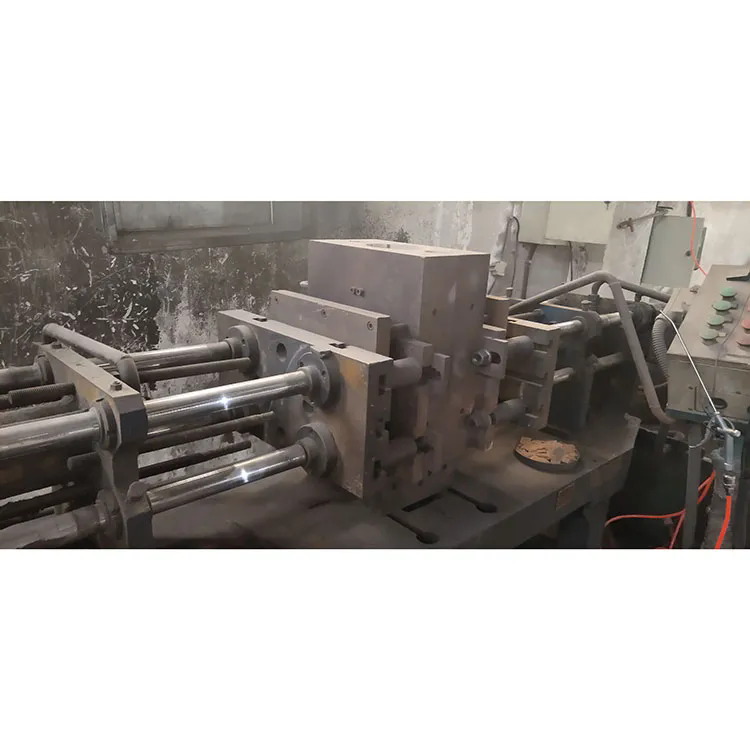Exploring Gravity Die Casting: A Key Process in Modern Manufacturing
2024-10-11
Gravity die casting, also known as permanent mold casting, is a highly effective manufacturing process used to produce metal parts with excellent dimensional accuracy, surface finish, and strength. In this blog, we will explore what gravity die casting is, its benefits, the materials commonly used, and its applications across various industries.
What is Gravity Die Casting?
Gravity die casting is a process where molten metal is poured into a reusable metal mold, or "die," using only the force of gravity. Unlike other casting processes that rely on external pressure, gravity die casting allows the molten metal to flow naturally into the mold. The die is typically made from steel or cast iron, and it can be used multiple times to produce identical parts.
Once the molten metal cools and solidifies, the mold is opened, and the cast part is removed. The process is repeated for each subsequent part, making it highly suitable for medium to high-volume production runs.
The Process of Gravity Die Casting
The gravity die casting process involves the following key steps:
1. Die Preparation: The reusable metal mold is cleaned and coated with a refractory coating to prevent the molten metal from sticking to the mold and to extend the die’s lifespan.
2. Molten Metal Pouring: The metal, typically aluminum, zinc, or copper alloys, is heated to its melting point and poured into the die cavity using the force of gravity.
3. Solidification: As the metal cools, it solidifies, taking the shape of the mold. This step is crucial in determining the quality and strength of the cast part.
4. Ejection: Once the metal has solidified, the mold is opened, and the cast part is removed. The part may require additional finishing operations, such as trimming or machining, to meet final specifications.
5. Cooling and Reuse: The die is allowed to cool before it is prepared for the next casting cycle.
Benefits of Gravity Die Casting
1. High Dimensional Accuracy: Gravity die casting produces parts with tight tolerances and excellent surface finish, reducing the need for extensive post-processing.
2. Reusability of Molds: The use of reusable metal molds makes this process cost-effective for medium to large production runs. The durability of the dies allows for multiple uses, reducing overall tooling costs.
3. Improved Mechanical Properties: Parts produced through gravity die casting have superior mechanical properties compared to those made through sand casting, especially in terms of strength and durability.
4. Reduced Material Waste: Since gravity die casting creates precise molds, there is less need for excess metal, reducing waste and improving material efficiency.
5. Versatility in Design: This process allows for complex geometries and thin-walled designs, making it ideal for a wide range of applications.
Common Materials Used
Gravity die casting is compatible with a variety of metals and alloys, including:
- Aluminum: The most commonly used material due to its light weight, corrosion resistance, and excellent thermal properties.
- Zinc: Known for its durability and ability to produce intricate parts with high precision.
- Copper Alloys: Used for their excellent electrical conductivity and corrosion resistance.
Applications of Gravity Die Casting
Gravity die casting is widely used in industries where high precision, strength, and repeatability are essential. Some of the key applications include:
1. Automotive Industry: Components such as engine blocks, cylinder heads, and gearbox housings are often produced using gravity die casting due to the strength and precision required.
2. Aerospace: The aerospace industry benefits from the lightweight and durable parts produced through gravity die casting, such as turbine blades and structural components.
3. Electrical Equipment: Gravity die casting is used to manufacture housings and connectors that require high conductivity and corrosion resistance.
4. Industrial Equipment: Many machine components, pumps, and valves are made using this process, as it allows for durable, high-strength parts that can withstand heavy-duty usage.
5. Consumer Goods: Household appliances, hand tools, and other consumer products often use gravity die casting for components that need to be both aesthetically pleasing and functional.
Conclusion
Gravity die casting remains a cornerstone in modern manufacturing due to its efficiency, cost-effectiveness, and ability to produce high-quality parts. Its use across diverse industries, from automotive to aerospace, highlights its versatility and importance in producing reliable, high-performance components.
As technology evolves, gravity die casting continues to innovate, offering manufacturers a proven method for creating precise, durable, and lightweight metal parts. Whether you are producing components for industrial equipment or consumer products, gravity die casting offers a tried-and-true solution for your manufacturing needs.



